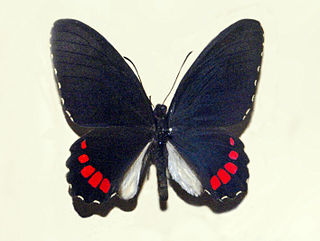
The Andean Community is a free trade area with the objective of creating a customs union comprising the South American countries of Bolivia, Colombia, Ecuador, and Peru. The trade bloc was called the Andean Pact until 1996 and came into existence when the Cartagena Agreement was signed in 1969. Its headquarters are in Lima, Peru.

Xanthosoma is a genus of flowering plants in the arum family, Araceae. The genus is native to tropical America but widely cultivated and naturalized in other tropical regions. Several are grown for their starchy corms, an important food staple of tropical regions, known variously as malanga, otoy, otoe, cocoyam, tannia, tannier, yautía, macabo, ocumo, macal, taioba, dasheen, quequisque, ʻape and as Singapore taro. Many other species, including especially Xanthosoma roseum, are used as ornamental plants; in popular horticultural literature these species may be known as ‘ape due to resemblance to the true Polynesian ʻape, Alocasia macrorrhizos, or as elephant ear from visual resemblance of the leaf to an elephant's ear. Sometimes the latter name is also applied to members in the closely related genera Caladium, Colocasia (taro), and Alocasia.

Dracontium is a genus of flowering plants similar to those of Amorphophallus. Unlike Amorphophallus which is found in the Old World, this genus has a New World distribution and is native to South America, Central America, southern Mexico, and the West Indies.

The following outline is provided as an overview of and topical guide to South America.

Parides erithalion, the variable cattleheart, is a North and South American butterfly in the family Papilionidae. The species was first described by Jean Baptiste Boisduval in 1836.
The Sudamérica Rugby Women's Sevens, is the regional championship for women's international rugby sevens in South America. It has been contested since 2004. The tournament is held over two days, typically on a weekend. It is sanctioned and sponsored by Sudamérica Rugby.

Telchin licus, the banana stem borer, is a moth of the Castniidae family. It is native to South America, where it is found from Colombia, Venezuela and the Guianas, throughout the Amazon basin in Brazil and Peru. It has also been recorded as an introduced species in Hawaii.

Pseudopieris is a genus of butterflies in the subfamily Dismorphiinae. They are native to the Americas.

Dismorphia amphione, the tiger mimic white, is a species of butterfly of the family Pieridae. It is found from Mexico and the Caribbean down to Brazil and Bolivia.

Dismorphia theucharila, the clearwinged mimic white, is a species of butterfly of the family Pieridae. It is found from Mexico to Bolivia and the Guianas.

Amauta papilionaris is a moth in the Castniidae family. It is found in Colombia, Venezuela, Peru, Bolivia, Ecuador and Panama.

Dismorphia medora, the Medora mimic white is a butterfly in the family Pieridae. It is found in Colombia, Ecuador and Peru.

Dismorphia crisia, the crisia mimic white or cloud forest mimic-white, is a butterfly in the family Pieridae. The species was first described by Dru Drury in 1782. It is found from northern Central America to Bolivia and the Amazon basin.

Dismorphia lewyi is a butterfly in the family Pieridae first described by Hippolyte Lucas in 1852. It is found from Venezuela to Bolivia.
Dismorphia hyposticta is a butterfly in the family Pieridae. It is found in Ecuador, Venezuela, Colombia and Peru.

Pseudopieris nehemia, the clean mimic-white, is a butterfly in the family Pieridae. It is found from Mexico to Brazil and Argentina. The habitat consists of rainforests and transitional cloudforests.

Parides phosphorus is a species of butterfly in the family Papilionidae. It is found in the Neotropical realm.

Heliconius ethilla, the ethilia longwing, is a butterfly of the family Nymphalidae. It was described by Jean-Baptiste Godart in 1819. It is found from Panama to southern Brazil. The habitat consists of marginal forests.

Doxocopa cyane, the Mexican emperor or cyan emperor, is a species of butterfly of the family Nymphalidae.














